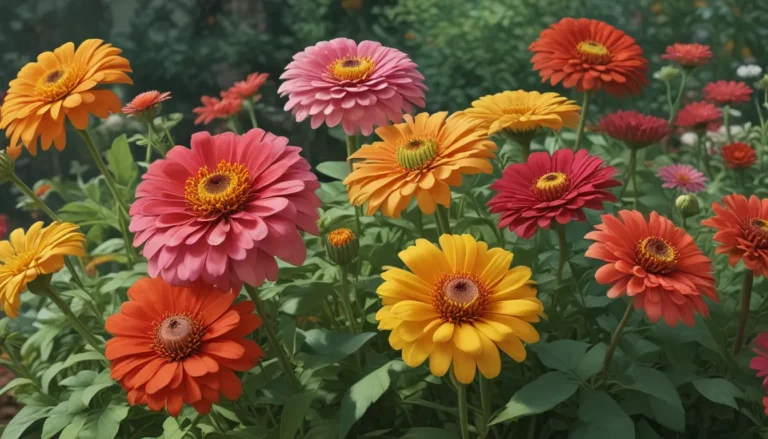Extensive Guide on Overwintering Nemesia Flowers

If you’re a gardener who enjoys the beauty of nemesia flowers, you might be interested in learning how to overwinter these delicate plants. Nemesias are charming bedding plants that are half-hardy perennials, often grown as annuals in temperate regions. While they typically die off in cold weather, they can be overwintered successfully under the right conditions.
In this comprehensive guide, we will cover everything you need to know to extend the life of your nemesia plants through the winter season. From basic care tips to preparing them for dormancy and ensuring they thrive indoors, we’ve got you covered. So, let’s dive in and uncover the secrets to successful nemesia winter care.
What You’ll Learn
- Nemesia Basics
- Prep for Dormancy
- Pot Them Up
- Cold Weather Care
Nemesia Basics
Nemesia plants belong to a genus of tender perennials native to sandy coastal regions and grasslands of South Africa. These plants are known for their low-growing mounds of small, orchid-like flowers that bloom in a variety of colors, including blue, maroon, mauve, orange, pink, purple, scarlet, white, and yellow, as well as bicolors. With a height ranging from 12 to 24 inches and a spread of 12 to 18 inches, nemesias thrive in cooler temperatures, with an ideal daytime temperature of around 70°F.
While nemesias are hardy in USDA Zones 9 to 10, they cannot withstand cold weather and will go dormant when temperatures drop below 50°F. In regions outside their hardiness range, it is essential to lift and pot up these plants for overwintering.
Prep for Dormancy
After the nemesia plants have finished flowering, it’s time to prepare them for dormancy. Start by cutting back all foliage using clean, sharp garden snips. Trim the foliage back to one or two inches above the soil line, and ensure you withhold water and stop feeding the plants as they enter dormancy.
Once the soil has dried out, lift the plants and pot them up for frost-free storage. Make sure the moisture levels are dry to lightly moist but not wet before transplanting them into containers.
Pot Them Up
To safely store your nemesia plants during the winter, lift them from their beds after flowering but before the first frost. Transplant them into containers with drainage holes, choosing a container that is large enough to hold the rootball comfortably. Provide well-draining soil by adding a layer of drainage material at the bottom of the container before filling it with a light, humusy potting mix.
Settle the root ball in place at the same depth as in the garden, or with the crown just below the soil line. Water sparingly if the soil is extremely dry, as these plants are dormant and require minimal watering during the winter months.
Cold Weather Care
Nemesia plants do not make attractive houseplants during the winter, so it’s essential to find a suitable location for them to thrive. Store them in a cool room with indirect light, where temperatures remain between 50 to 65°F. Avoid wet soil, as these tender plants are prone to root rot in cold weather.
Allow the soil to dry out between waterings, giving the plants only a small amount of water to barely moisten the roots. As spring approaches and new growth appears, gradually increase watering and feed the plants with an all-purpose fertilizer with a balanced formula.
Once the plants reach about four inches in height, maintain slightly moist soil and prepare them for planting out into beds, containers, or window boxes once all danger of frost has passed.
Fantastic Flowers
By following these steps for overwintering your nemesia plants, you can enjoy another season of richly colored, fantastic flowers in your garden. Remember to help the plants enter dormancy by withholding water and potting them up for storage in a cool, frost-free environment. With proper care, you’ll be rewarded with a long flowering season of colorful blooms.
Are you ready to try overwintering tender perennials like nemesia? Share your experiences in the comments below, and let us know how it went.
For more tips on how to keep other tender perennial flowers alive through the winter season, check out these helpful guides:
- How to Overwinter Snapdragons
- How to Overwinter Garden Geraniums
- Your Complete Guide to Overwintering Petunias
In conclusion, by following these guidelines, you can ensure the successful overwintering of your nemesia plants and enjoy their beauty for seasons to come. Happy gardening!





